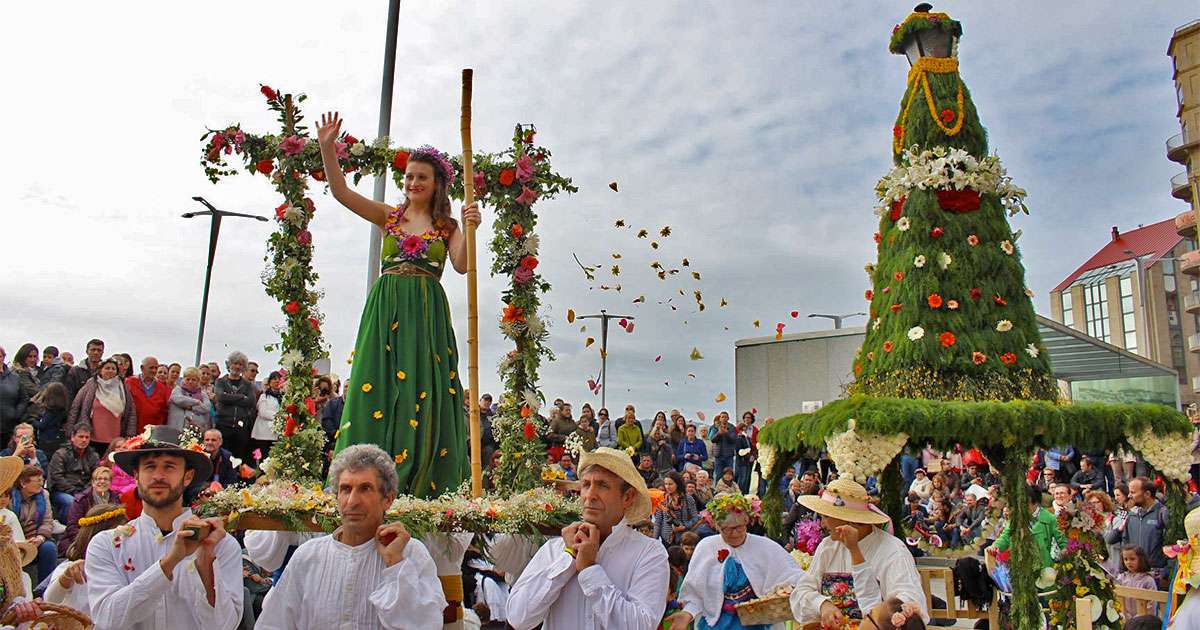
Celebration of the Maios in Vigo (Galicia) – metropolitano.gal
1. Introduction: Two simultaneous times, two inner fires
There is a fire that dances to the rhythm of the earth, and another that burns silently in the caverns of the soul.
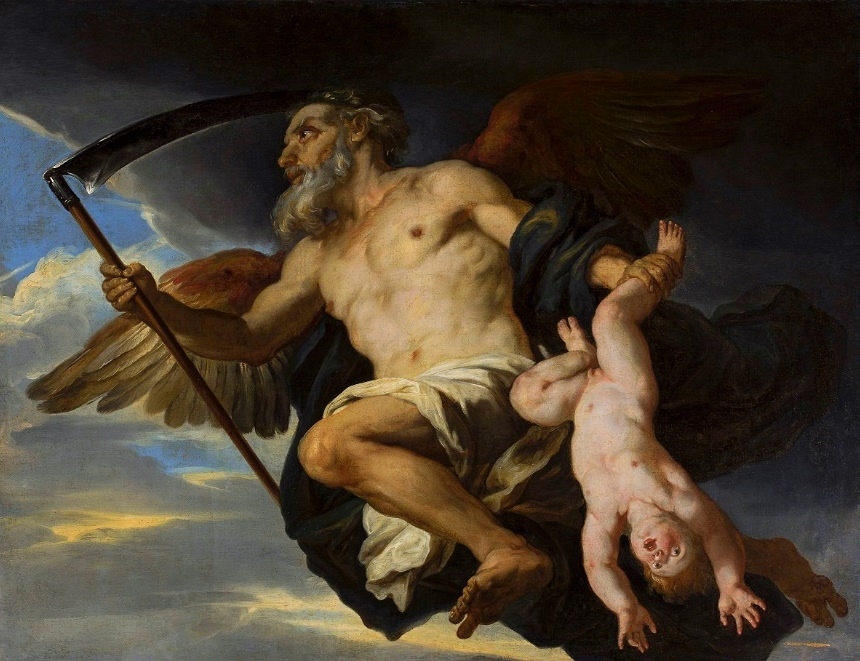
“Kronos and his child” by Giovanni Francesco Romanelli (National Museum, Warsaw)
Kronos and Kairós. Two ways of living time. The first is the time of the seasonal wheel, the rebirth of the fields, and the cyclical dance of life. The second, the qualitative moment, is the time that opens within the soul like a fissure of alchemical transformation.
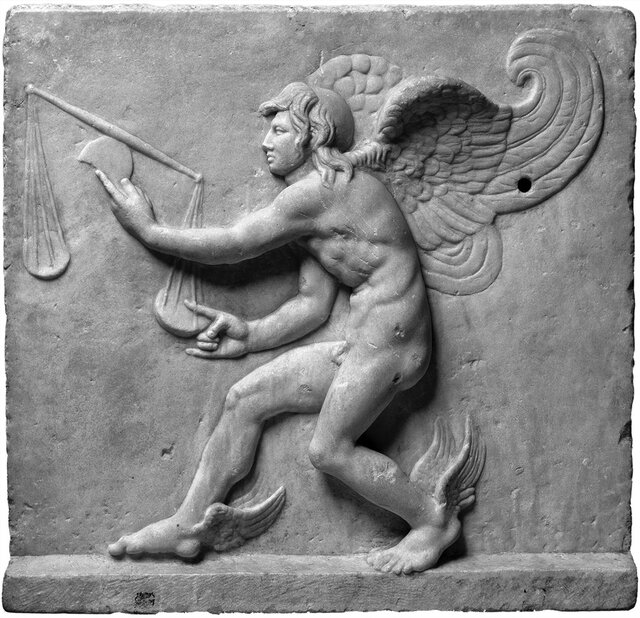
Fig. 5: Kairos, relief (Museo di Antichità, Turin) CC BY-SA 4.0
At this moment, Beltane stands before me at the confluence of these two currents: the external exaltation of life (Kronos) and the inner abyss of symbolic death (Kairós).
Beyond its agricultural dimension, Beltane is, in the Alexandrian Tradition, a rite of cosmic attunement, where the fertility visible on earth mirrors invisible processes of activation within the soul, harmonising individuals with the deep forces that underlie the cycles of life, death, and rebirth.
It is not only about honouring the external time, but also about aligning the soul with that cosmic heartbeat that pulses beyond matter.
Along the initiatory path, the outer blossoming of Beltane in Kronos may intertwine, in Kairós, with an internal descent into the Nigredo — the alchemical phase of dissolution and regeneration. Regardie (1984) defines Nigredo as “the eternal change of life into death and death into life, symbolised by grass that sprouts and feeds on corrupt and decaying corpses” (Vol. II, p. 18).
Thus, Beltane can be lived as a luminous expansion toward the world and, at the same time, as a fertile journey into the night of the soul. This double experience reflects the work of transmutation, which seeks to make the soul reborn through conscious action. The fire of Beltane is not only the spark of life in Kronos; it is also embers in Kairós: a suspended instant in which the soul, in contact with its Daimon, begins its inner metamorphosis.
This time of year always speaks to me of opening… but that opening doesn’t always come filled with light.
2. The outer fire: The Maios in Galicia — tradition, beauty, and transgression
Among flowers and songs, the earth exhales its first conscious breath.
2.1 Origin and meaning of the Maios
In the heart of spring, the community dances to seal its sacred pact with life.

Maio in Maios celebration in Vigo (metropolitano.gal)
The Maios festival in Galicia has its roots in ancient fertility rituals linked to the agricultural cycle. As Clodio González Pérez (1989) explains, the May cycle begins in mid-April and extends until early June, when “plants, after having blossomed, announce the future harvest with their first fruits” (p. 3). These rituals sought to promote abundance, protect the fields, and renew the symbolic covenant between the community and the land.
Julio Caro Baroja (1979) emphasises that May celebrations across Europe represent “the season of love” (p. 112), an exaltation of life that crosses vegetal, animal, and human realms. This springtime eros permeates the songs, dances, and floral offerings, connecting participants to the regenerative forces of nature. As the author notes, these spring festivities, beyond their agricultural meaning, functioned as collective rites of passage, marking the transition from the time of winter death to the time of renewed life.
2.2 Essential elements of the Maios
Each flower and each song is the key that opens the gates of a new cycle.
The Maio and the Maia
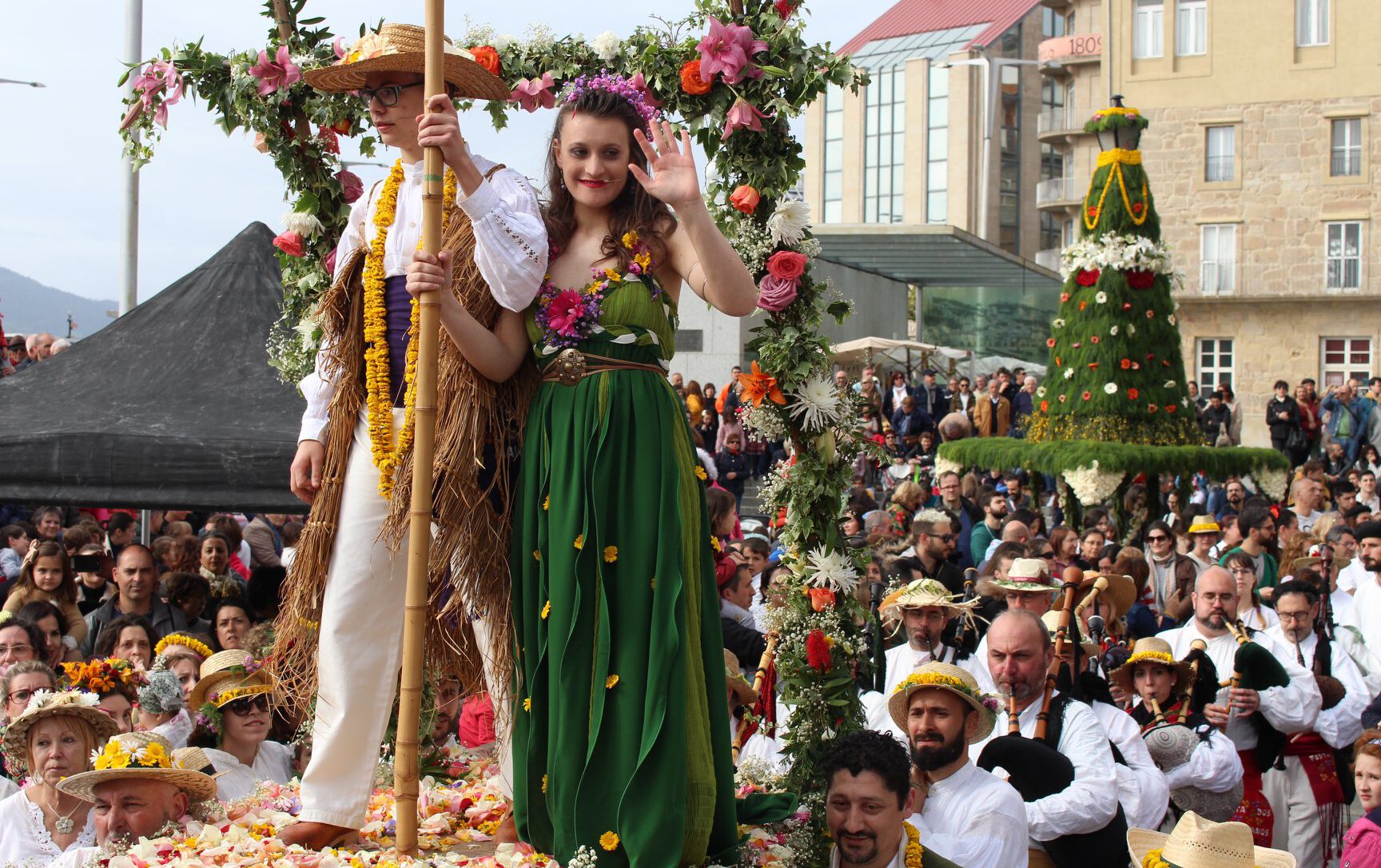
Maio and Maia in Maios celebration in Vigo (metropolitano.gal)
The Maio is a conical or pyramidal structure, built on a wooden base and covered with flowers, moss, ivy, and broom branches. In some versions, a boy or girl is dressed as the Maio, completely adorned with living vegetation (González Pérez, 1989, p. 6). The Maia personifies victorious fertility. She is usually represented by a young girl adorned with flowers, leading rituals and performances that dramatise the victory of life over winter.
The dances and the songs
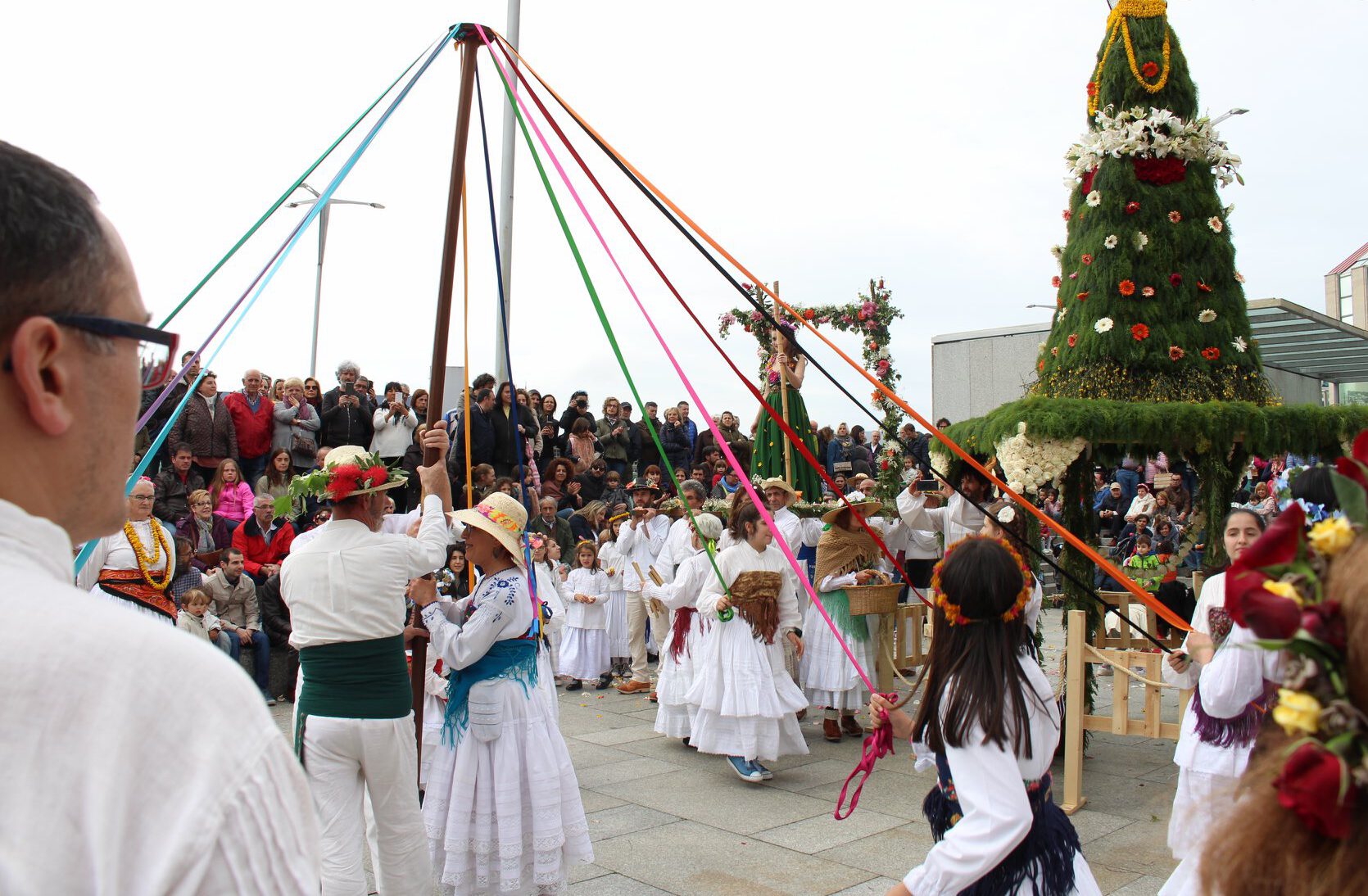
Baile das fitas in Maios celebration in Vigo (metropolitano.gal)
The Baile de las Fitas, a ritual dance around the Maypole, symbolises the intertwining of vital forces. Meanwhile, the sung coplas — often improvised — serve as vehicles for blessing, social critique, and symbolic renewal.
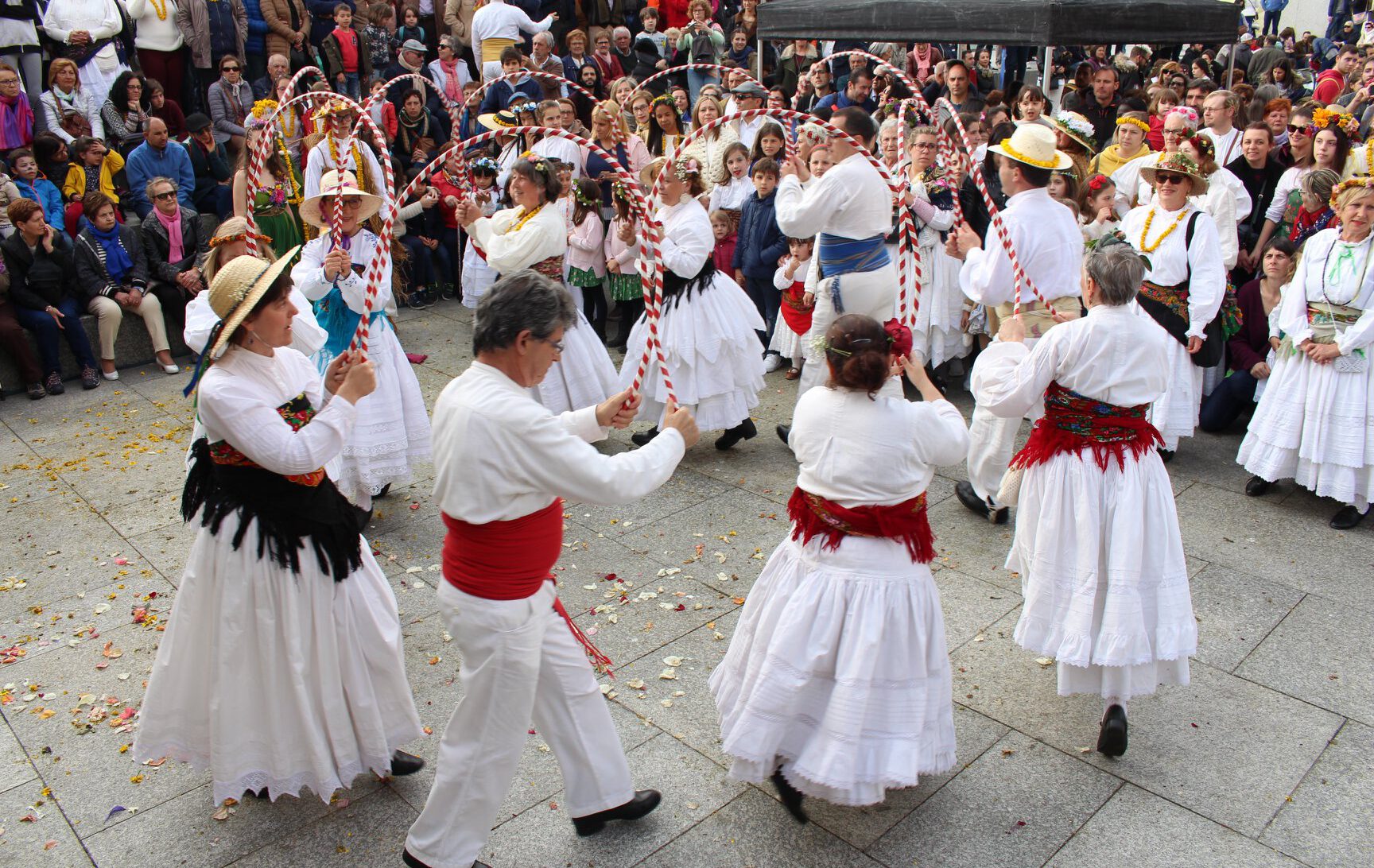
Danza dos Arcos in Maios celebration in Vigo (metropolitano.gal)
As Caro Baroja (1979) points out, the coplas have profound cathartic power: they allow the community to channel tensions through the ritualised form of song. Through them, the community expels symbolic evils, reaffirms internal bonds, and restores social cohesion after winter. This mechanism of ritualised critique and renewal parallels the spirit of seasonal festivals such as Beltane.
Traditional verses such as those collected by Casto Sampedro (1886) attest to this function:
“Xa vén o mes de maio / coas frores polo chan, / as meniñas cantan maios / e os homes van traballar.”
(“Now comes the month of May / with flowers on the ground, / the girls sing the Maios / and the men go to work.”)
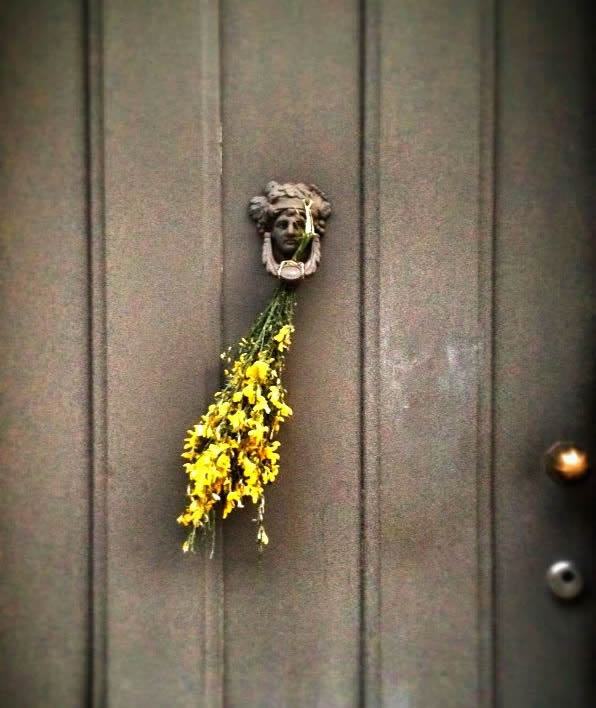
Xestas nas portas/ Xestas on the doors (Agpress) CC BY-SA 3.0
Alongside the songs, another symbol of protection remains alive: the broom branches (Cytisus scoparius). Traditionally, they were placed at the entrances of houses to ward off evil spirits and ensure fertility, as reflected in the proverb:
“Xesta na porta posta / para que non entre a meiga.”
(“Broom at the door / so the witch cannot enter.”)
This custom, far from being a relic of the past, is still alive in many rural areas of Galicia. As reported by La Región (2023), placing broom branches on doorways during May carries an ancient protective meaning:
“The broom serves to protect the home from the entry of witches and negative energies, also ensuring the fertility of the land and the family” (La Región, 2023).
Thus, the humble and powerful broom continues acting as a living talisman, connecting the present with the ancient traditions of seasonal renewal and protection.
2.3 The Maios as cosmic axis: the axis mundi
Under the symbol of the Maio, the earth rises toward the sky, and the soul awakens.
The Maio, a tall structure often crowned by a cross, embodies the ancient symbol of the axis mundi — the cosmic axis that connects earth, underworld, and heaven (Herrero, 2007). Dancing around the Maio is an act of world regeneration: a ritual where the vital sap ascends and fertilises all planes of existence.
This vision connects the Maios directly to Beltane, where fire and the central tree also represent cosmic and communal fertilisation.
2.4 Urban evolution and social critique: The Maios in Vigo
Amid cement and flowers, the ancient voice rises again to sing the truth.
In Vigo, the Festa dos Maios adapted to urban life while preserving its transformative spirit. Since the 1970s, the satirical verses have incorporated open social critiques. During protests against urban speculation, for instance, the coplas proclaimed:
“O maio do Berbés / xa non é de fiuncho, / é de cemento armado / e prezos de rebumbio.”
(“The May of Berbés / is no longer made of fennel, / it is of reinforced concrete / and inflated prices.”)
This critical dimension is not mere protest: it is a ritualised mechanism of collective catharsis. Through symbolic satire, the community expresses tensions, denounces injustices, and reaffirms its identity — all within a festive and regenerative framework (González Pérez, 1989; Caro Baroja, 1979).
Today, initiatives like the workshops of the Asociación Veciñal e Cultural Casco Vello engage schoolchildren in creating new coplas, addressing themes such as gender equality and environmental protection, under the guidance of poets like Manuel Álvarez Torneiro (Metropolitano, gal, 2024). Beyond the critical verses and the popular vitality that floods Vigo each May, the celebration culminates in a dramatised performance that archetypically symbolises the eternal struggle between winter and spring.
2.5 Dramatized performance: The triumph of the Maia
From the duel between winter and spring, new life blossoms.
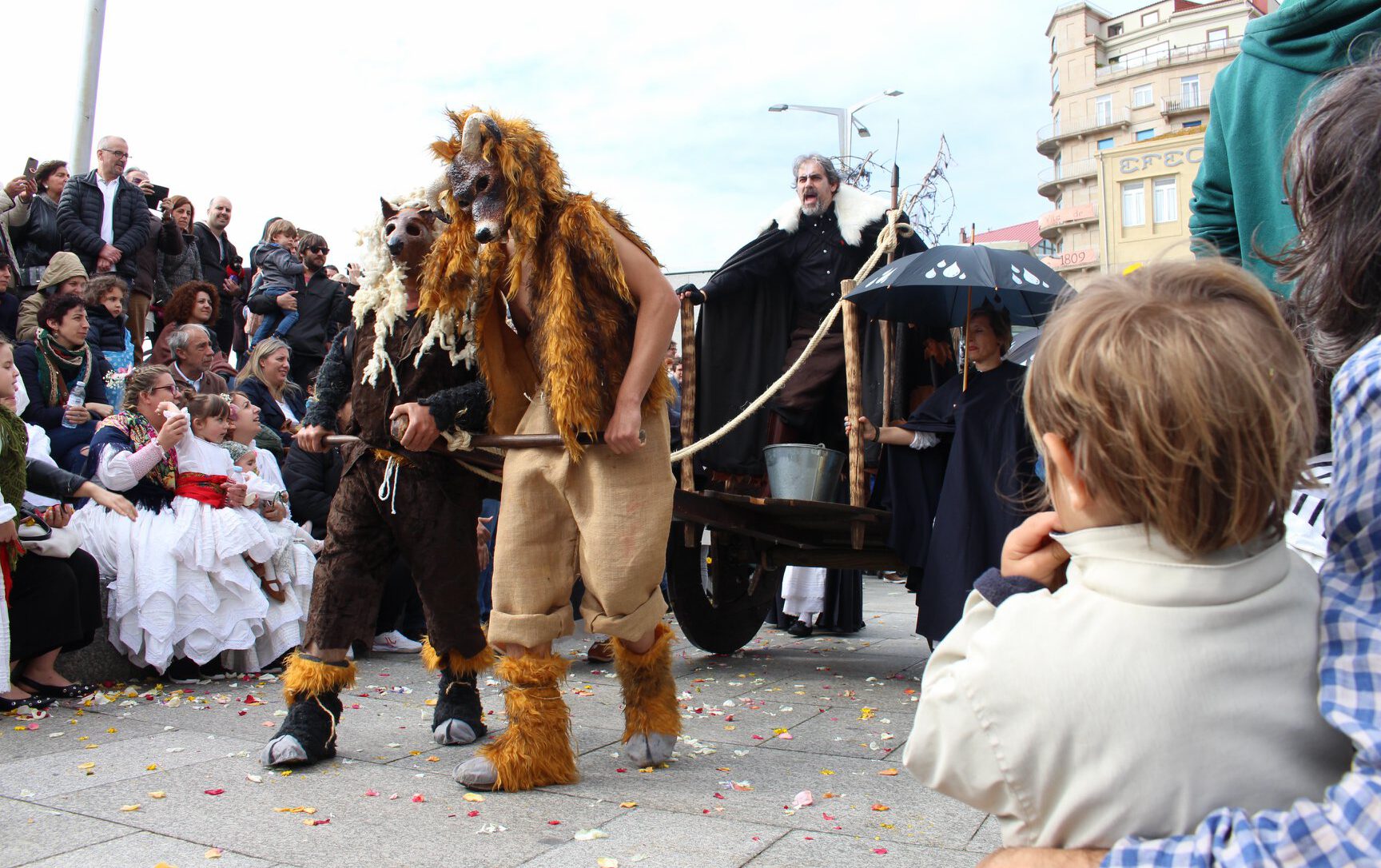
Winter is coming to face the Maia (metropolitano.gal)
The celebration culminates in a dramatised performance:
- Spring exaltation: Ritual dances beneath arches of flowers, with costumes woven from ivy and oak galls.
- Symbolic struggle: Winter, embodied by a figure dressed in dark colours, confronts the radiant Maia covered in blossoms. The battle represents the resistance of the dead cycle and the ultimate triumph of renewed life.
- Festive closure: After Maia’s victory, the entire community celebrates with music from traditional groups like Os Cuncheiros, symbolically closing the old cycle to open a new one (Metropolitano, gal, 2024).
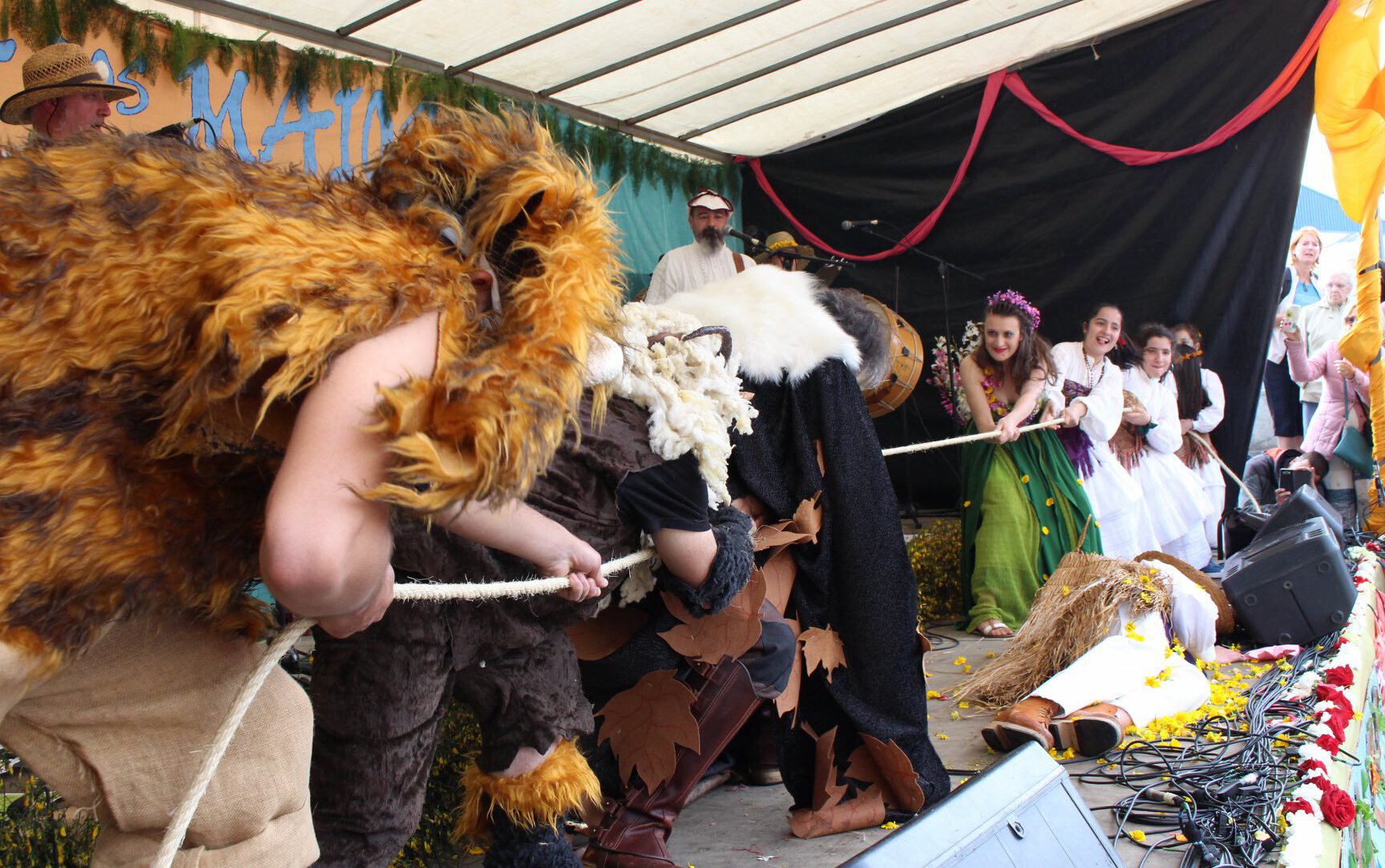
Duel between winter and the Maia (metropolitano.gal)
This performance, accompanied by texts created by local poets, is not merely a show: it is a magical and communal act. Each year, as the Maia conquers winter, not only does spring reclaim the city, but something within each participant also begins to blossom anew. Just as the Maia triumphs over winter in the ritual dance of the Maios, each Beltane invites us to fight our own inner battles, to open hidden paths, and to allow the sap of the soul to rise toward its own flowering.
Beyond the earth that blooms beneath our feet, a secret spring struggles to be born within the soul — a sacred fire pushing through fear, doubt, and shadow. When this inner fire ignites, it not only celebrates external life but also marks the beginning of a profound journey toward authenticity (González Pérez, 1989; Caro Baroja, 1979).
In my own journey, there was a Beltane when that fire became a radical decision: coming out, revealing my truth to the world, fully embracing who I was. It was a rite of passage as potent as any Maios dance: a symbolic death of old masks, an eruption of vital sap that had long been contained.
From this inner Beltane, from this alchemy of body and soul, I want to speak to you now.
3. Beltane and the Body: Coming Out as a Rite of Passage
3.1 A fire that could not be contained: first ruptures
Before a flower bursts into the light, there is a time when its sap silently presses against the walls of the seed.

Me when I was a child.
I was thirteen years old and in the early years of secondary school when the first major internal movement began: a fire that could no longer be contained. During that time, I suffered bullying from some classmates due to my gender expression, which led me to seek help from the school counsellor. Her tenderness, attention, and caring presence became a crucial support in my process. It was within that safe space that I began to accept something that had long been alive within me: that I was attracted to masculine-presenting people and that I was a queer person.
However, that inner fire, which timidly and urgently sought space, was violently exposed when my father discovered a Messenger conversation I had had with another queer person. I had no opportunity to come out at my own pace: I was forcibly outed. My father confronted me, tried to invalidate it, and ended up telling my mother and grandmother. Suddenly, my most intimate truth was exposed without a safety net.
The environment was not conducive: except for the small refuge of my counsellor and a few close friends, there was no safe space where I could freely express who I was. Nevertheless, the support of those people, especially two friends and one boy who did not change how they treated me, was vital for my survival.
3.2 Migration and reunion: a slow spring
Sometimes the sprout must change soil in order to flourish.
Soon after, the political and economic circumstances in Venezuela prompted our migration to Galicia. My grandmother committed to supporting me and somehow mediated so that the situation with my father would not escalate further. During those early years in Galicia, the subject remained in suspense: it was not spoken about, as if the internal spring could somehow be contained. But the sap continued to rise, silently.
My first boyfriend, at sixteen, was the first real space where I could allow myself to feel desire, affection, and belonging. However, as often happens on uncertain paths, the relationship ended when he could not sustain an open relationship. It was a small trauma, another wound in the awakening of authenticity.
3.3 Inner universities: the second Beltane
Some springs must ripen before they fully bloom.
When I entered university, a new threshold opened: I experienced my first sexual relationship with a boy at the age of eighteen. It was another rite of passage: not only a physical awakening but also the affirmation of a body that no longer asked permission to feel or exist. Beltane, in its alchemical dimension, does not always occur in the linear time of Kronos: it happens in the Kairós, in those qualitative moments when life erupts like a fire that transforms everything.
3.4 Reconstruction and reconciliation
Sometimes, winter also transforms from within.
Although my coming out was harsh and premature, today I recognise that my family acted the best they could with the tools they had. I do not justify the violence of the moment, but I have come to understand the processes they were undergoing. After the initial confrontation, my father sought professional help, at the suggestion of my counsellor, and undertook a personal journey of acceptance. Although I was already living in Galicia, that silent process allowed him, years later, to fully accompany me in my affective and relational life.
Today, I can say that I have a good relationship with him, based on mutual respect and sincere acceptance. That process of reconciliation, slow and matured over time, is also part of my inner Beltane: a flame that, after many nights, found a way to remain alive.
But Beltane also teaches that flourishing is not only about healing personal wounds: it is about challenging the structures that deny diverse life.
3.5 Beyond binarism: identity, magic, and justice
Beltane does not only bloom in the fields: it also demands to be born in consciousness.
My own journey, marked by both internal and external coming out, has taught me that identity cannot be reduced to a single plane of existence. I am a queer person: a dissident from the hegemonic models of sex and gender. I do not fully identify with either the label “man” or “woman”. Above all, I am a person.
And at the same time, I am a Witch and Priest of the Alexandrian Tradition, where I recognise and work with the primordial forces that traverse my physical existence. There is no contradiction: biological sex may be a vehicle for energetic expression on magical planes, but my gender identity, my expression, and my complete being are not trapped in that single dimension.
I understand the difference between levels of reality: the physical, the psychological-symbolic-etheric, the astral, and the spiritual. And although each has its own laws and modes of manifestation, they function as communicating vessels. The soul is not bound to a single mould: it dances between them, is reborn, and transforms.
Thus, I find it profoundly painful and troubling that, even in the 21st century, things like this still happen: in April 2025, the United Kingdom Supreme Court ruled that the legal definition of “woman” is based exclusively on biological sex, ignoring the richness, complexity, and dignity of gender experiences (BBC News Mundo, 2025).
This imposition does not protect: it mutilates. It does not care: it imprisons. It betrays the very principle of Beltane: the blossoming of life in all its forms, bodies, and expressions.
My coming out, my multiple internal Beltanes, are not just personal stories: they are also acts of sacred resistance. I affirm that the fire of Beltane does not distinguish imposed molds: it embraces the diversity of every being who chooses, despite everything, to bloom.
4. The Inner Fire: The Nigredo in the Initiatory Path
In the womb of the night, an invisible fire works in secret, purifying the soul with dark embers.
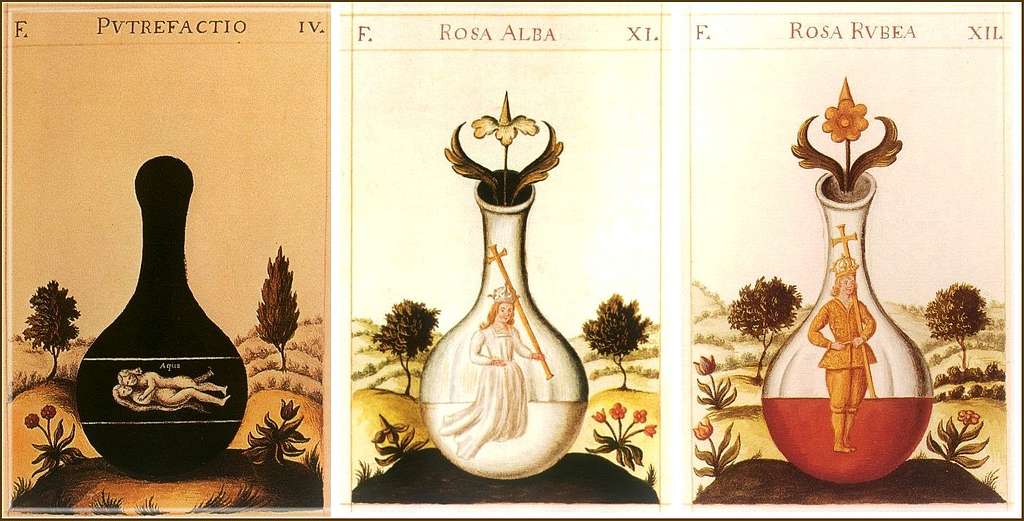
Magnum Opus. PDM 1.0
If the external fire of Beltane celebrates life in Kronos, the inner fire may be the fire of the Nigredo in Kairós: the dark phase of alchemical work and the initiatory path.
The Nigredo, as Israel Regardie (1984) explains, is “the eternal change of life into death and of death into life, symbolised by the grass that grows and feeds on corrupt and putrefied corpses” (Vol. II, p. 18). There is no true blossoming unless the seed has first had to rot in darkness.
On the initiatory path, Beltane does not always feel like an external spring. Sometimes it is a secret combustion that dissolves old layers, burning away what no longer serves. It is a flowering that happens in the shadow: silent, painful, and fertile.
Every process of growth, every profound awakening, involves crossing a threshold of darkness: a crucible where old forms are consumed so that life may emerge renewed. Just as the fields bloom after the rigor of winter, the soul blooms after accepting its descent into the dark womb of its own being.
The Nigredo is an inner Beltane where fire is not light, but loving calcination. It is the phase in which the soul must learn to love its own symbolic putrefaction, without fleeing from it or disguising it. In the silence of the crucible, there are no masks: only the incandescent truth of what must die so that the new may be born. Transmutation does not happen by denying darkness, but by consciously embracing it: recognizing fear, anger, loss, and sadness as sacred raw materials.
Beltane teaches that not every flower blooms without tearing apart. Some of the deepest flowers are born from the hidden blood beneath the earth. Some of the strongest seeds must die a thousand times before opening to the sun.
When the fire of Beltane also illuminates the internal ruins, then true rebirth becomes possible. For there is no true Beltane without an inner Samhain. Kronos and Kairós meet again. There is no new life without accepted death.
This year, on my path, Beltane and Nigredo join hands:
I celebrate life, yes, but I also honour the shadow that helps my soul, step by step, to be reborn.
In the fire that cannot be seen,
I purify the seed that has no name.
I accept the night to deserve the dawn.
In silent death, the immortal flower is planted.
5. Beltane as an Alchemical Turning Point
Among the ashes and the flowers, the soul recognises the sacred moment where matter and spirit fertilise the future. Beltane, as a Sabbat, is an act of fertilisation. But that fertilisation is not only of the bodies: it is also of the soul.

Own authorship
The fire of Beltane is the alchemical fire that transmutes. As Franz Bardon (2001) points out, “without the fire element, no transformation or development could occur” (Initiation into Hermetics, section “The Fire Element and Its Influence on the Human Body”).
Beltane is the opportunity to recognise passion, desire, and vital impulse as sacred fires that, when consciously integrated, can become catalysts for our spiritual metamorphosis. To live Beltane through Kronos and Kairós is to recognise that the external blossoming and the internal purification are two faces of the same dance.
Each Beltane offers us a threshold: to open ourselves to the life that bursts outward and to the life that, in secret, is forged within the inner crucible. To accept both dimensions, to embrace them, is the true alchemical act.
I honor the fire that disintegrates me,
the darkness that purifies me,
the blood that nourishes me,
and the flower that, without fear, grows in the ashes.
Beltane is not only the festival of life:
it is the sacred pact between death and rebirth.
6. Honoring the Two Fires
One fire opens the earth, another opens the heart: Beltane teaches us that both dance within the same eternal wheel.
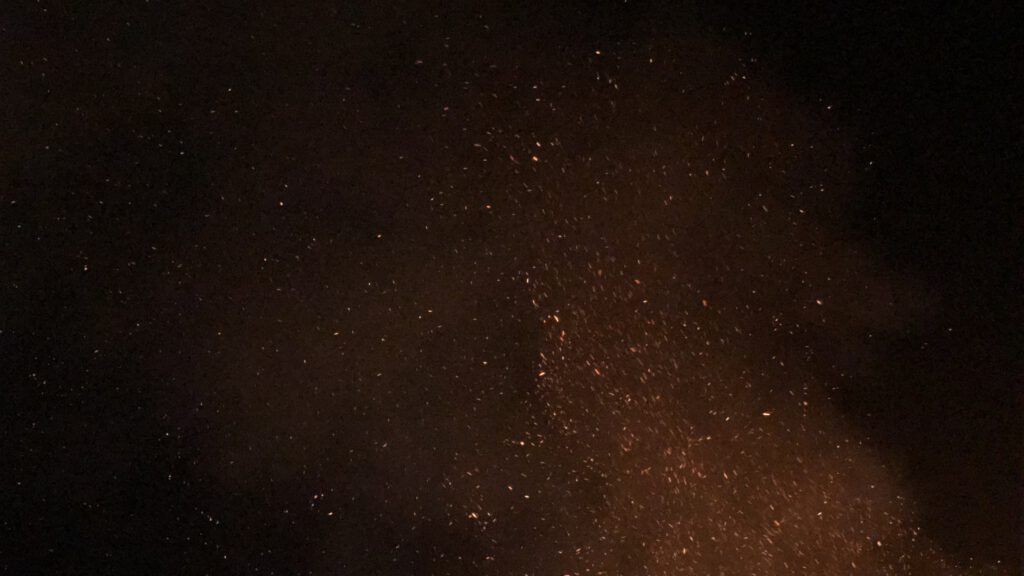
Own authorship
Honouring Beltane is honouring the life that bursts into flowers… and the life that works in secret within the shadows. Honouring Kronos is dancing with the cycles of the earth; honouring Kairós is embracing our internal alchemy. Both are necessary. Both are fire.
The flower that is born from the manure, the fire that fills with flowers on the outside and with fertile ashes within, is the true celebration of Beltane.
Born from the fire,
purified in the fire,
reborn in the flower,
crowned in the shadow.
References
- Bardon, F. (2001). Initiation into Hermetics (Original work published 1956). Edaf.
- BBC News Mundo. (2025, April 16). The legal definition of a woman is based on biological sex, rules the UK Supreme Court. https://www.bbc.com/mundo/articles/c77ndvx1d3go
- Caro Baroja, J. (1979). The season of love: Popular festivals from May to St. John. Taurus.
- González Pérez, C. (1989). A festa dos maios en Galicia: Unha aproximación histórico-antropolóxica ó ciclo de maio. Edicións do Castro.
- Herrero, B. F. (2007). The tree of life in popular celebrations. Biblioteca Virtual Miguel de Cervantes. https://www.cervantesvirtual.com/obra/el-arbol-de-la-vida-en-las-celebraciones-populares-784015/
- La Región. (2023, May 6). Broom branches on Galician house doors during the month of May. https://www.laregion.es/sociedad/ramas-xesta-puertas-casas-gallegas-mes-mayo_1_20230506-2378201.html
- Metropolitano.gal. (2024, May 5). Vigo celebrates the arrival of spring with the Festa dos Maios. https://metropolitano.gal/enfoque/vigo-celebra-a-chegada-da-primavera-coa-festa-dos-maios/
- Atlántico.net. (2023, May 8). Os Maios: What they are and where they are celebrated in Vigo. https://www.atlantico.net/vigo/maios-que-son-como-donde-celebran-vigo_1_20230508-1908137.html
- Regardie, I. (1984). The Complete Golden Dawn System of Magic (Vol. II). Falcon Press.
- Sampedro, C. (1886). Galician Popular Songbook.
